10 ways to write better melodies and harmonies in your DAW
Music theory and technical tricks that'll improve your toplines and chord progressions
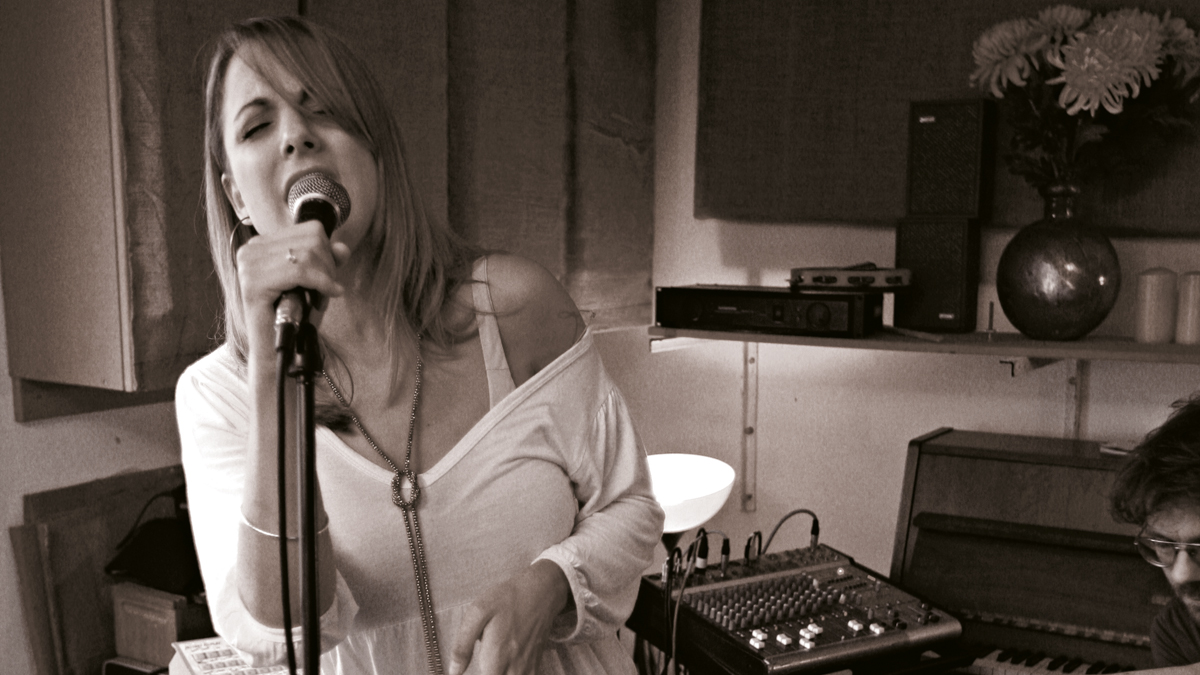
Many electronic musicians put a lot of focus on their drums and bass, but if you want to create a track with a strong hook - particularly one with commercial appeal - melody and harmony are equally important.
However, finding the perfect topline tune and supporting chords isn't always easy, so we've come up with 10 things you can try when the magic just isn't there for you.
1. Inverted glory
Inverted chords sound scary, but they’re very easy to use. Inverting a chord just means the order of the notes in the chord is changed.
For instance, a ‘normal’ A minor triad chord uses the notes A C E, in that order; the first inversion of A minor would be C, E, A. Same notes, different order!
Do this in MIDI by simply moving notes up/down an octave. You can really change the feel of the progression, as well as restrict chords to a certain note range for production purposes.
2. Mute and solo
If you’ve got a neat chord sequence but you’re struggling to find a melody that fits over it, copy your chords to the melody track then ‘solo’ one note for each chord by muting the others with your DAW’s mute tool. Solo different notes and shift them to different octaves until you find a solid basis for a tune.
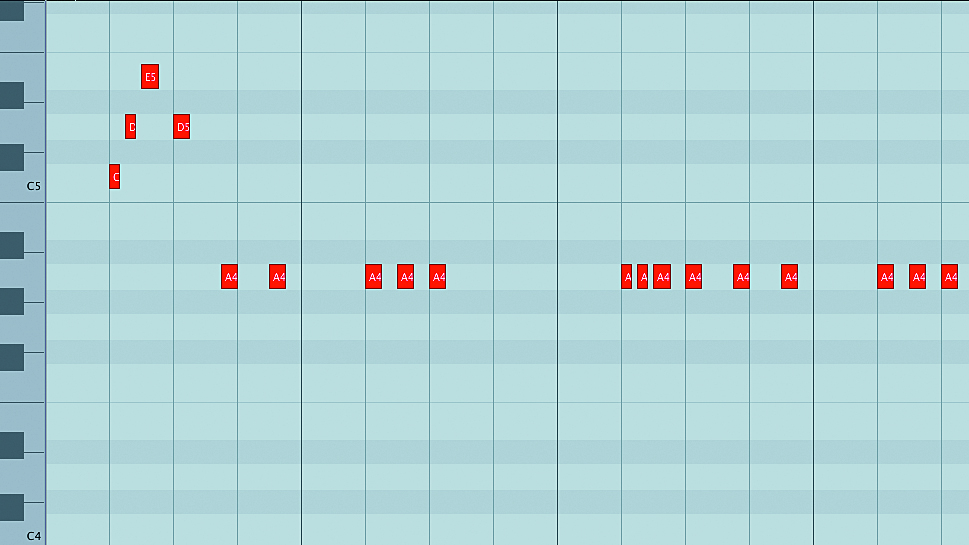
3. Syncopate
The importance of rhythm in melody-writing should not be overlooked. Add syncopation to make tunes less predictable, and remember, you don’t have to have melody notes landing right on the first beat of the bar. You could even bring your melody in an eighth-note ahead of the bar for a ‘pushing’ feel (you may want to move the chords/bass forward too).
Want all the hottest music and gear news, reviews, deals, features and more, direct to your inbox? Sign up here.
Of course, sometimes a super-simple rhythm is exactly right for the song, so use your judgment.
4. Try the one-note trick
Having trouble writing a melody? Here’s a trick to bust your writer’s block. Forget about notes for a moment and instead program or record a one-note rhythm that complements the music you’ve already got. Now go through and move each note up or down to create a melody.
Repetitive rhythms can work well here – repeating a rhythm using different notes is a classic melody-writing trick.
5. Add ornaments
To jazz up your melodies, decorate them with musical ornaments. Add super-short grace notes at the start of, just before or even in the middle of a longer note. Try trills: quickly alternating pairs of notes. Brief runs at the ends of notes can help to smooth transitions. Pitchbend and vibrato are also useful forms of ornamentation.
6. Use trial and error
So you’ve come up with a killer tune, but you’re not sure where to begin with putting chords to it, or even what key it’s in. No problem! So long as you know how to construct major and minor triads, you can try out all of the chords that contain the same main notes as your melody and figure out which work best, then slot them all together to create a flowing sequence.

7. Transpose, pt1
Want to give a section of your song a ‘lift’ or boost in energy? Transpose the whole part up a few semitones - a classic trick that never fails to add excitement and renew the vigour of a tune.
8. Seventh heaven
If your knowledge of chords goes no further than basic major and minor triads, you’re really only a small step away from turning them into seventh chords, which can add a cool, sophisticated air to your progressions.
Basic minor chords can be turned into minor sevenths by adding a note 10 semitones (that is, a minor seventh interval) above the root note. For major chords, your options for the extra note are 10 semitones above the root (making a dominant seventh chord) and 11 semitones above the root, (making a major seventh chord).
9. Pedal tone
A great way to build atmosphere and tension is to use a pedal tone. This means having one note sustained or repeated while the chords above it change. In this context, you can get away with some quite extreme dissonances that might sound pretty harsh on their own. Pedal notes are usually in the bass, but they don’t have to be. And you could even have a pedal riff, repeating a musical motif and putting it under a changing chord sequence.
10. Transpose, pt2
If you work with real instruments or play one yourself, don’t overlook the incredible power of audio transposition as a songwriting tool. With a little work, you can rewrite riffs, manipulate melodies and change chord progressions.
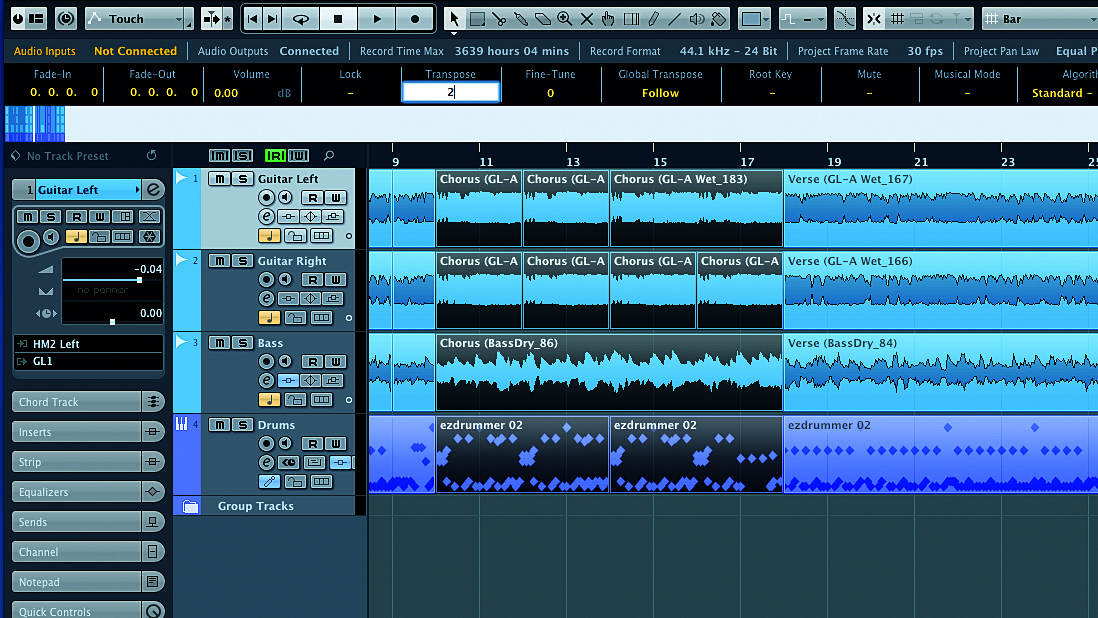
Step 1: In our example, we’ve recorded two guitar parts and a bassline. We’d like to hear how the selected section would sound in the key of C# instead of B, but it’d be a real hassle to re-record these parts ‘just to see’.
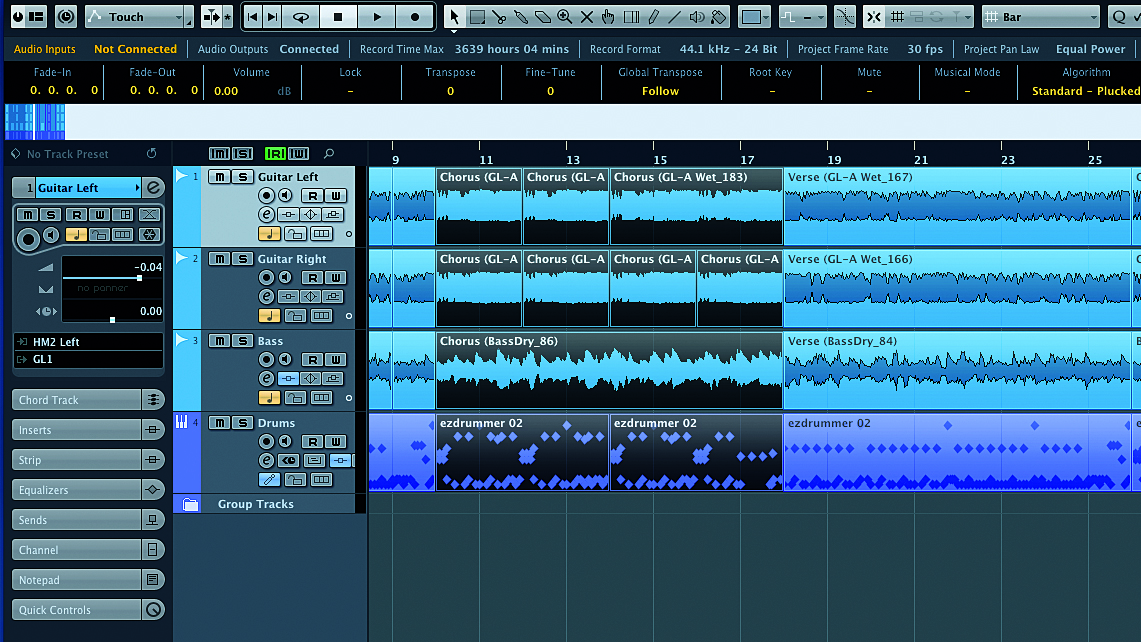
Step 2: With the clips selected that we’d like to hear in a new key, we use our DAW’s pitch shift option to bump the section up by +2 semitones. Most DAWs offer a similar feature, usually with several pitchshifting algorithms – try them all to see what works best on your material.
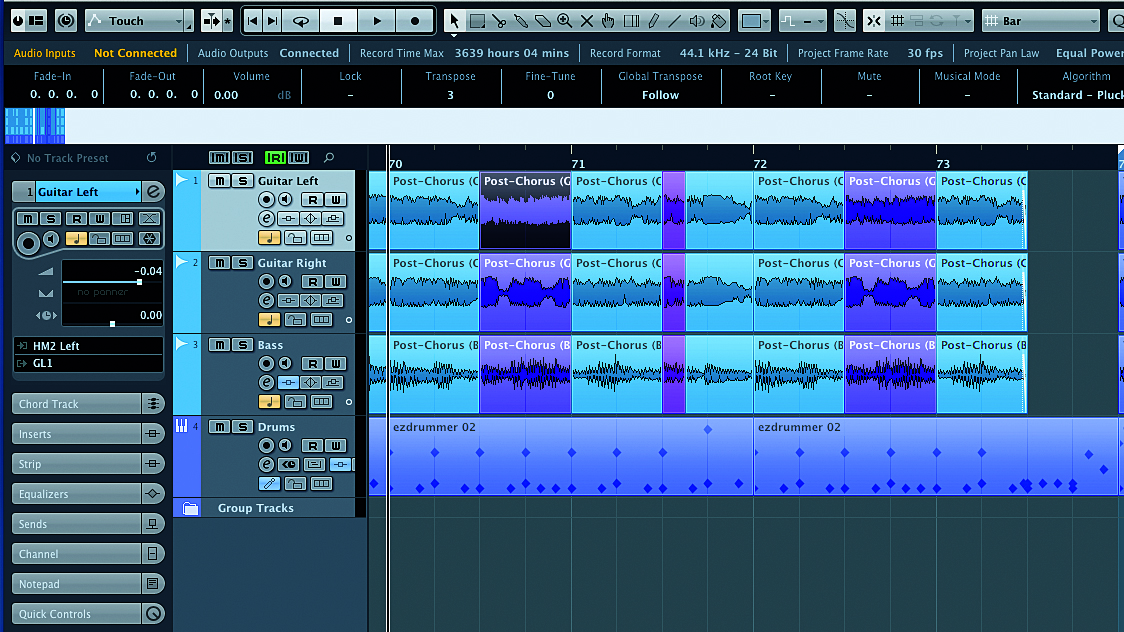
Step 3: Let’s use transposition to create a whole new section: a post-chorus transition. We duplicate a few bars of the verse riff, chop it into two-bar sections and transpose them to create a totally new riff. See? We said it was easy…
Computer Music magazine is the world’s best selling publication dedicated solely to making great music with your Mac or PC computer. Each issue it brings its lucky readers the best in cutting-edge tutorials, need-to-know, expert software reviews and even all the tools you actually need to make great music today, courtesy of our legendary CM Plugin Suite.
